The year started with optimism about the Ukraine “Spring Counteroffensive” but has ended with broad acknowledgement that the conflict has devolved into the static attrition of trench warfare last seen a century ago, which, short of a technological or tactical leap, seems ready to dominate the conflict in 2024.
The thing that hath been, it is that which shall be; and that which is done is that which shall be done: and there is no new thing under the sun.
Ecclesiastes 1:9
The outbreak of a hot war in Ukraine in February 2022 commenced as a highly mobile one, with attempts by Russian forces to take the capital Kyiv reaching the outskirts of the city in a matter of hours. This in turn was pushed back rapidly, along with fresh territorial gains by Russia in the East cancelled out by a Ukrainian counterattack from Kharkiv by May 2022.
It has been claimed that Ukraine was doing well in its war of liberation against Russian occupation because it has “retaken about 50 per cent” of land held by Russia, but in truth, the vast majority of that was only held by Russia for weeks or even days in the early months of the conflict. With those early manoeuvres and counter-manoeuvres settled, the war has become remarkably static since, with Ukraine able to boast of tens of square miles liberated, but tens of thousands of square miles still occupied by Kremlin forces.
There were high hopes that 2023 would not be bogged down, and the start of the year was marked by optimism in NATO capitals that a suitably equipped and trained Ukraine would enjoy rapid breakthroughs in the Spring. Part of the preparation for the much-vaunted ‘Spring Offensive’ was the massive transfer of Western NATO-standard equipment to Ukraine and the training of Ukrainian troops in NATO tactics to use it effectively.
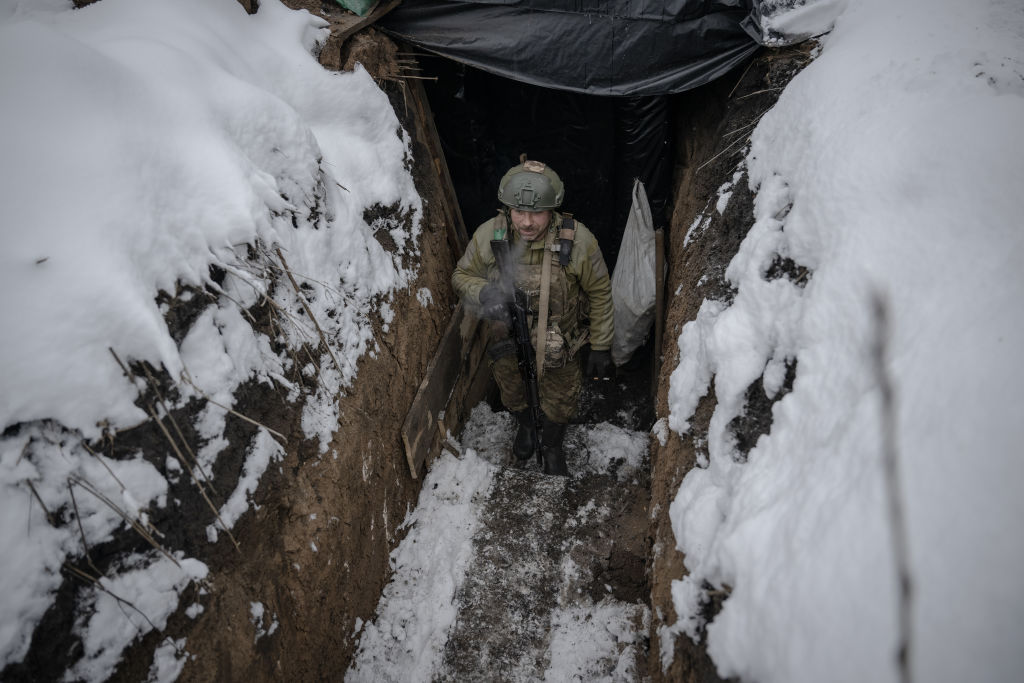
KUPIANSK, UKRAINE – NOVEMBER 21: A Ukrainian soldier is seen in a trench on the front line in the direction of Kupiansk, where clashes with the Russian army continue despite the severe winter conditions, in Kupiansk, Kharkiv region, Ukraine on November 21, 2023. (Photo by Ozge Elif Kizil/Anadolu via Getty Images)
This huge and rapid transfer saw NATO equip and train nine new armoured brigades backed by over 1,500 armoured vehicles, 230 tanks, and millions of rounds of ammunition. But Russia evidently spent the winter entrenching its newly taken lands and the so-called Spring Offensive eventually ended up being delayed until the Summer. Ultimately, the counter-attack was acknowledged by Ukraine’s leadership to have failed to achieve its objectives.
As drily noted by The Economist in November: “Five months into its counter-offensive, Ukraine has managed to advance by just 17 kilometres” (around ten miles).
Ukrainian officers complained their Western-trained but otherwise fresh troops with no real combat experience were left “mentally broken” by the attempt and a great many were killed. There has been much finger-pointing over who is to blame for the failure of the Spring counteroffensive, and while some wild claims have been made, yet Ukraine’s leadership has largely pinned the failure on their allies for not providing enough equipment in time.
President Zelensky said in September that Ukraine’s counteroffensive failed because the country had waited too long for weapons, and this had given Russia time to dig in. As the counter-offensive was underway, he said in July that: “frankly, we didn’t have enough munitions, armaments, not enough brigades properly trained in these weapons”. Ukraine’s top general, Valery Zaluzhny was striking similar notes then, saying in the same month the failure of the counteroffensive was down to insufficient equipment, particularly jet fighters.
But General Zaluzhny went far further by the end of the year, stating that this was not simply an equipment issue, but that the NATO doctrine by which the counteroffensive was meant to be fought had failed to deliver. In significant remarks in November, the General said NATO doctrine calls for highly mobile forces to engage in manoeuvre warfare making progress of 19 miles a day, like Iraq in 2003.
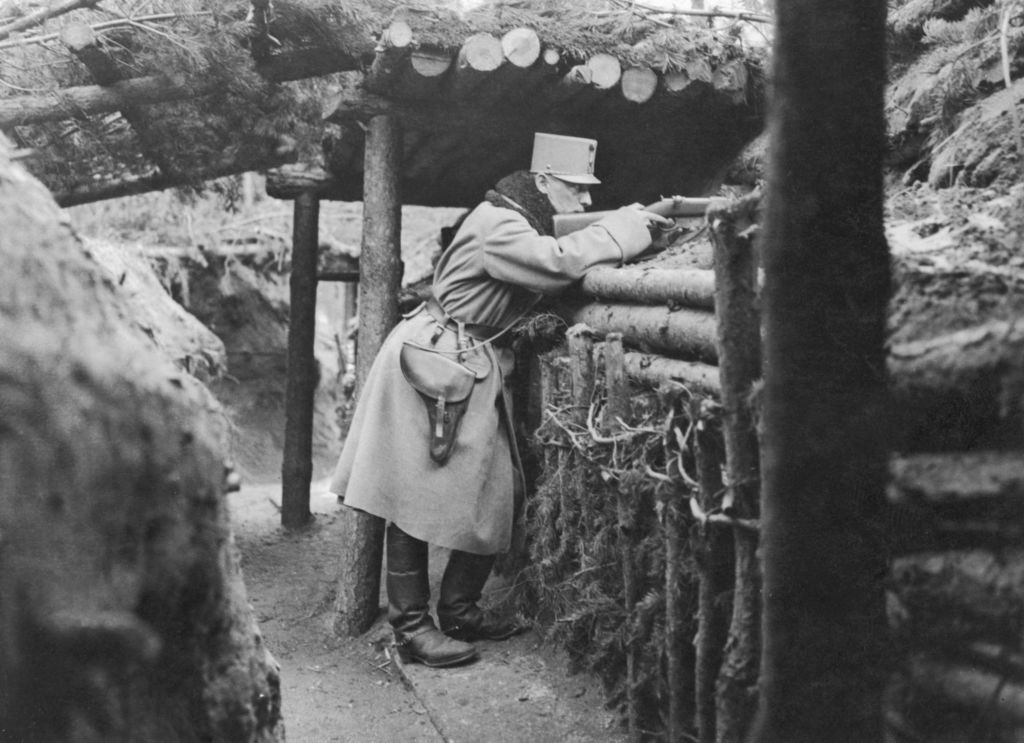
An Austrian soldier aims through a loophole in one of the outpost Carpathian trenches during World War I, circa 1915. (Photo by R. Sennecke/Paul Thompson/FPG/Getty Images)

DONETSK OBLAST, UKRAINE – NOVEMBER 15: Ukrainian soldier of the 67th brigade in a trench in his fighting position on the frontline, in the direction of Kreminna, Donetsk Oblast, Ukraine on November 15, 2023. (Photo by Diego Herrera Carcedo/Anadolu via Getty Images)
At that rate, Zaluzhny said, the counteroffensive should have been won long ago already, and he could have “reached Crimea, to have fought in Crimea, to return from Crimea and to have gone back in and out again”.
As it is, Ukraine’s top military man reflected, the war now more closely resembles a Great War battlefield of a century ago than a highly dynamic NATO battlespace. He reflected that when it became apparent the direction the war was going in, he started to adjust his own thinking, abandoned modern Western tactics, and started researching tactics used to overcome the trench warfare stalemate of the First World War.
General Zaluzhny said he borrowed a 1941 copy of a Soviet-era treatise on Breaching Fortified Defence Lines in the library of the Ukrainian military college and had been studying it. He remarked: “And before I got even halfway through it, I realised that is exactly where we are because just like then, the level of our technological development today has put both us and our enemies in a stupor.”
While Russia’s work to dig in and plant minefields is a large part of the “stalemate”, as the general put it, he also articulated his view that the emergence of a new dimension of high-tech drone warfare is a key factor in pushing the conflict into a WWI-like state. The proliferation of drones has made surprise strikes and advances impossible, he said, because battlefield intelligence is now so good. He said: “The simple fact is that we see everything the enemy is doing and they see everything we are doing.”
There will be no deep and meaningful breakthrough, he said, unless something changes, such as another new technology, or unforeseen development in tactics to overcome the present “stalemate”.
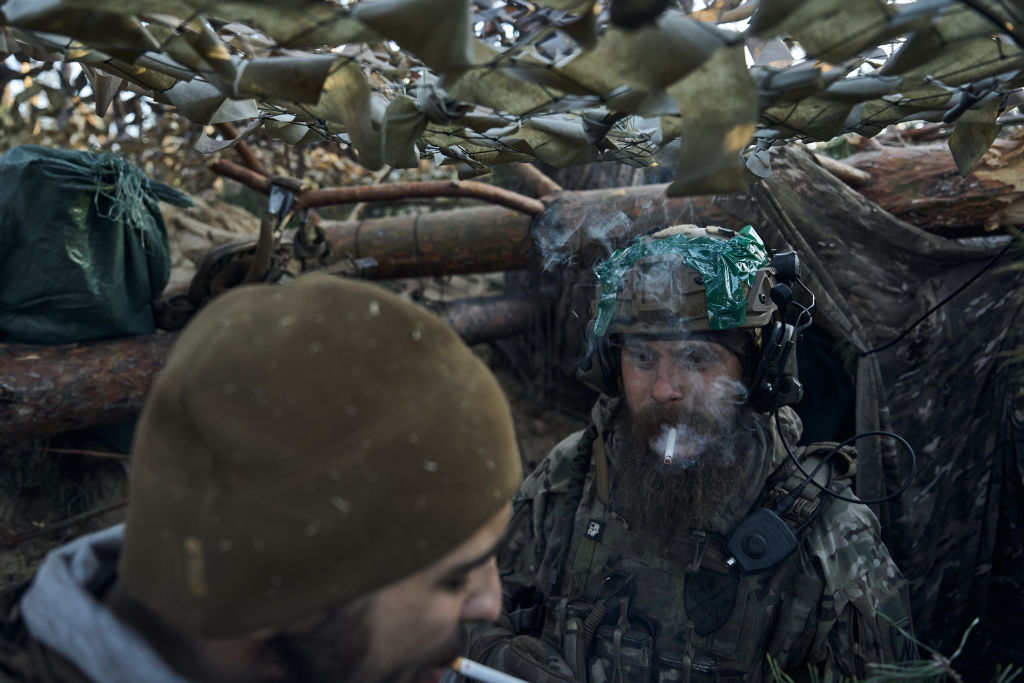
KREMINNA, UKRAINE – SEPTEMBER 24: Ukrainian soilders in a trench during combat manoeuvers in the Kreminna Forest on September 24, 2023 near Kreminna, Luhansk region, The border of the Donetsk region, Frontline of the Russian Ukraine war, Ukraine. (Photo by Libkos/Getty Images)
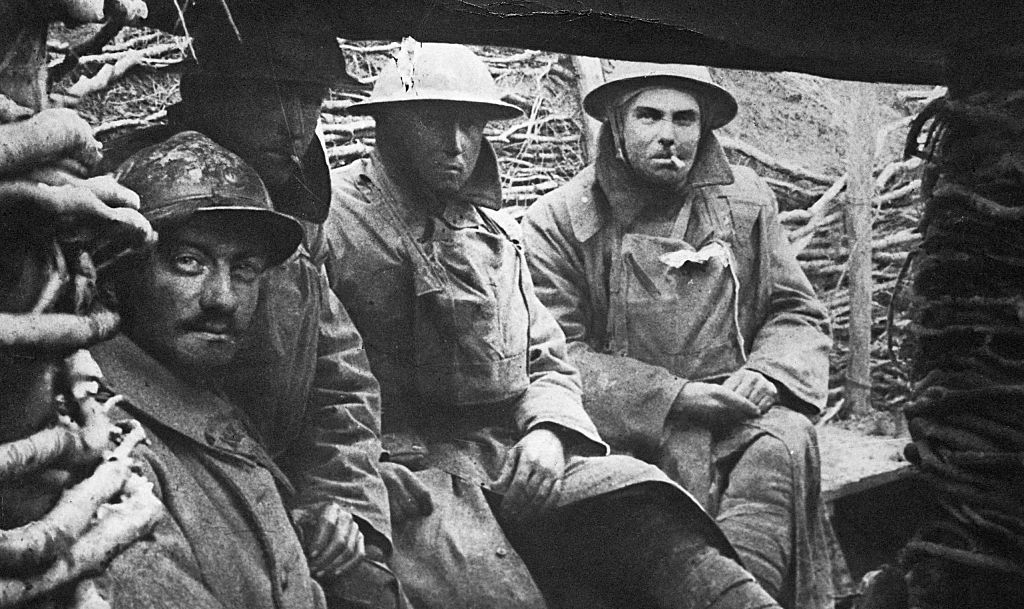
First World War British soldiers in a trench 1914. (Photo by: Universal History Archive/Universal Images Group via Getty Images)
This is no trivial change or historical curio: attritional trench warfare is a throwback that maximises human suffering, grinding towards ‘victory’ that substitutes the emollient of heroism for senseless, industrial-scale death. And again, it is not trivial for Ukraine to lose a generation of young men to war and women to emigration.
The First World War trenches are remembered and commemorated as filthy, fetid, and disease-ridden places which killed the delicate honour of fin de siècle Europe with the emergence of savage weapons both grimly old and horrifyingly new. Like, for instance, “asphyxiating gas”:
A panic-stricken rabble… with gray faces and protruding eyeballs, clutching their throats and choking as they ran, many of them dropping in their tracks and lying on the sodden earth with limbs convulsed and features distorted in death.
And
[I watched] figures running wildly in confusion over the fields. Greenish-gray clouds swept down upon them, turning yellow as they traveled over the country blasting everything they touched and shriveling up the vegetation. . . . Then there staggered into our midst French soldiers, blinded, coughing, chests heaving, faces an ugly purple color, lips speechless with agony, and behind them in the gas soaked trenches, we learned that they had left hundreds of dead and dying comrades.
And so, with the creation of ever-larger trench systems, the alleged deployment of chemical gas against soldiers by Russia in those trenches, and the position of front lines being characterised by “stasis” rather than movement, the war in Ukraine has bogged down this year to a point more familiar to students of history than practitioners of modern strategy. Indeed, even the battlefields of the Second Ukraine War are familiar, and the echo of history makes itself heard in some places.
One of the deadliest single events of this conflict to date was the destruction of the Kakhovka dam, possibly blown to literally wash away a major front of the Ukrainian counter-offensive attempting to bridge the Dnieper (Dnipro) River. Only slightly more than 100 years before in 1920, a Western-backed army supplied with cutting-edge British tanks was attempting to push against the Moscow Soviet ‘Reds’ in the same place around Kakhovka.
The Russian Civil War was not generally like the Great War, but at Kakhovka 1920 it was, with both sides deeply entrenched in a battle lasting months. In the end, the ‘Whites’ trying to turn back the power of the massively numerically superior — if worse equipped — Soviets were destroyed, and even lost their tanks at Kakhovka, as a triumphant painting depicting their capture held by the State Central Military Museum Moscow [pictured, top], and several surviving British Great War tanks kept as trophies in Russia to this day attests.
The West must hope history echoes, rather than repeats itself, in 2024 and its proxy Ukraine fares better now than the Whites did against the Soviet Reds in 1921. At the very least, Ukraine can claim to have been capturing enemy tanks this year, rather than the other way around.
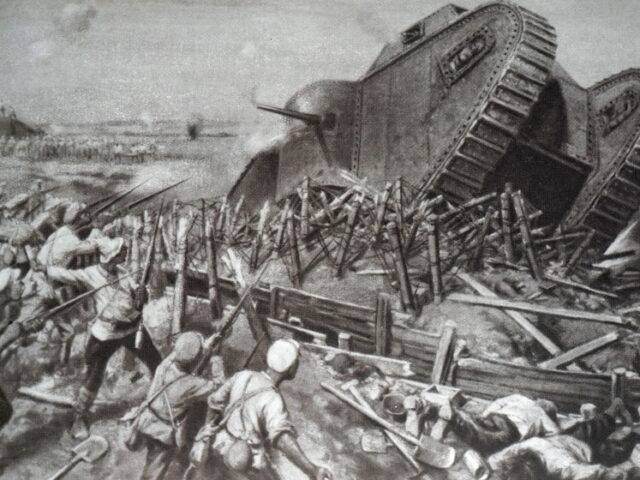
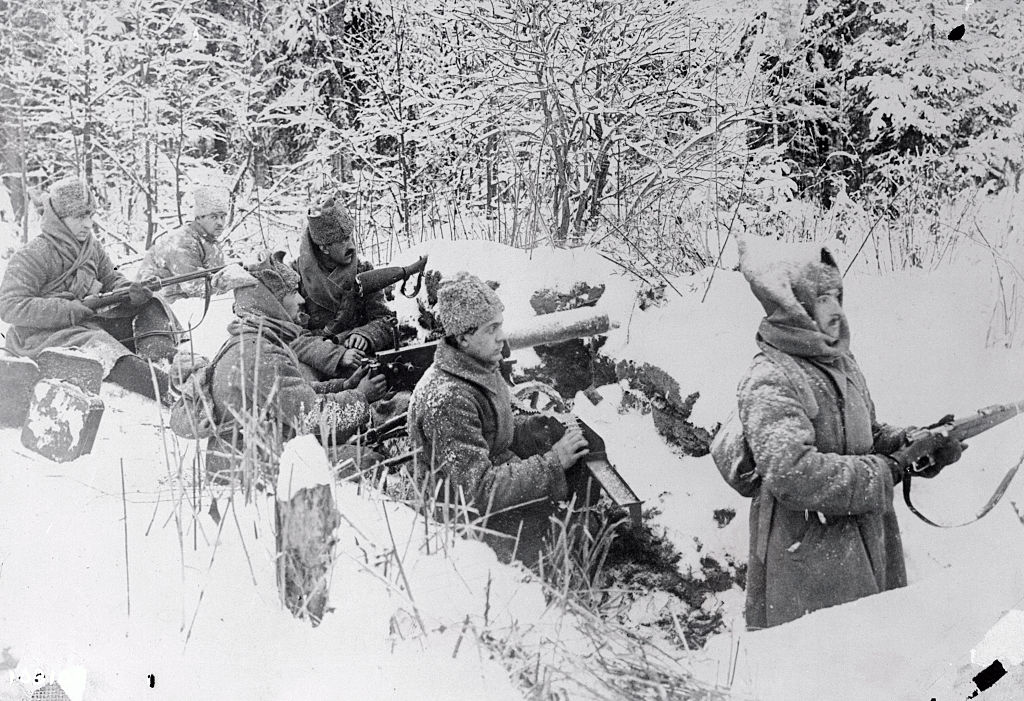
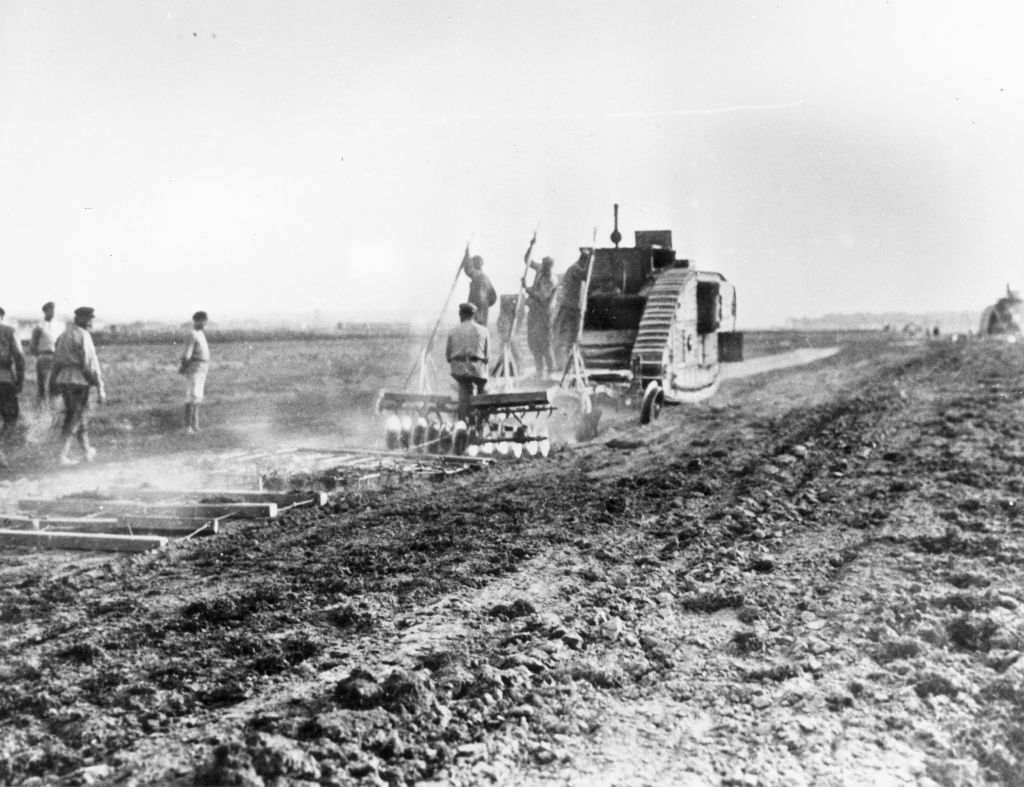
COMMENTS
Please let us know if you're having issues with commenting.